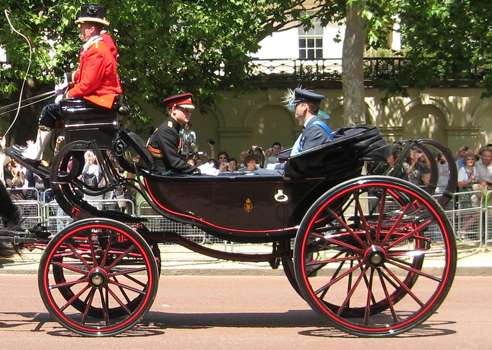Reading time: Less than 1 minute
Increase your vocabulary and you’ll make your writing much more precise. That’s why I provide a word of the week. Today’s word: barouche landau….
When I read the book Outline by Rachel Cusk, I encountered a term that was new to me: barouche landau. Here is how Cusk used it:
Then instead of driving in a barouche landau to Regent’s Park she pulled on her thick boots and scrambled over rocks.
As you can tell from context, it is a vehicle of some sort. But I didn’t know what type. Checking with Wikipedia, I learned that a barouche is a large, open, four-wheeled carriage, both heavy and luxurious, drawn by two horses.
And a landau is a horse-drawn four-wheeled enclosed carriage with a removable front cover and a back cover that can be raised and lowered.
A barouche-landau is mentioned in Jane Austen’s 1816 novel Emma, as something combining “the best features of a barouche and a landau.”
The vehicle was fashionable throughout the 19th century. It provides seats for four passengers, two of them sitting behind the coachman’s high box-seat. A leather roof can be raised to give back-seat passengers some protection from the weather.
Barouche is an anglicization of the German word barutsche, from the Italian baroccio or biroccio and in turn from the Latin birotus, meaning “two-wheeled.” (Ironic that the vehicle actually has four wheels, isn’t it?)
The word Landau is said to come from a town in Bavaria where the vehicles were first made. But some scholars argue that, in reality, the vehicle name comes from the Spanish word lando which referred to a light four-wheeled carriage drawn by mules,” from the Arabic al-andul.
The picture at the top of the post shows the Royal barouche in London, 2009, with Princes William and Henry.
An earlier version of this post first appeared on my blog on Oct. 2/19.


